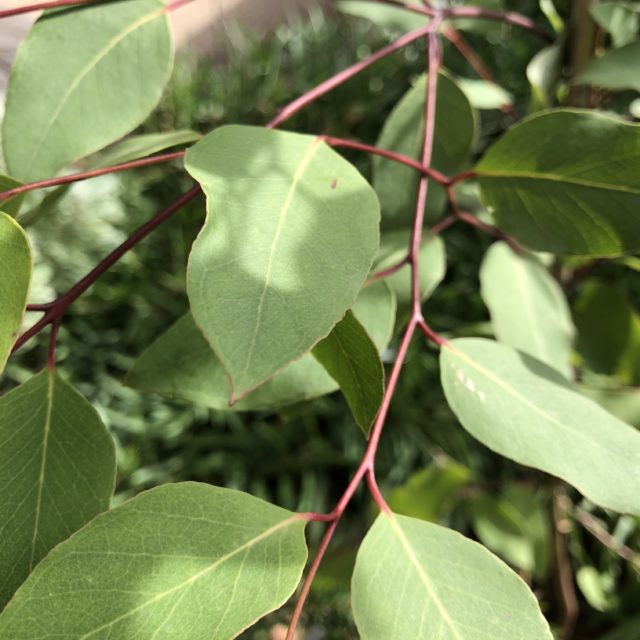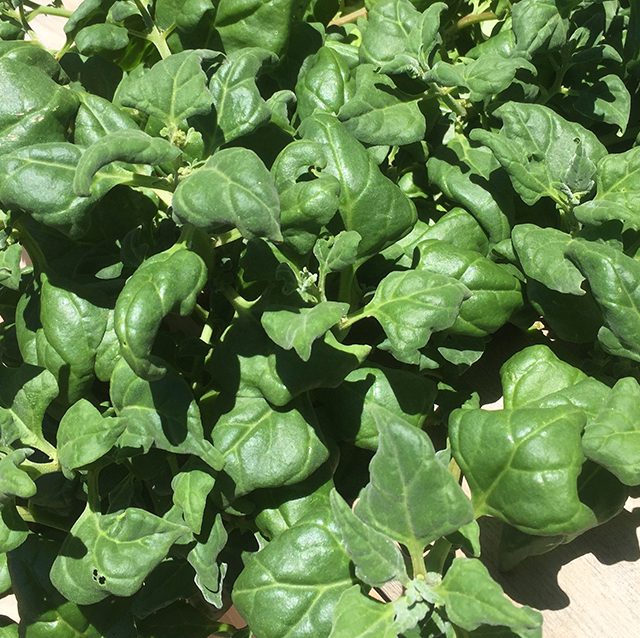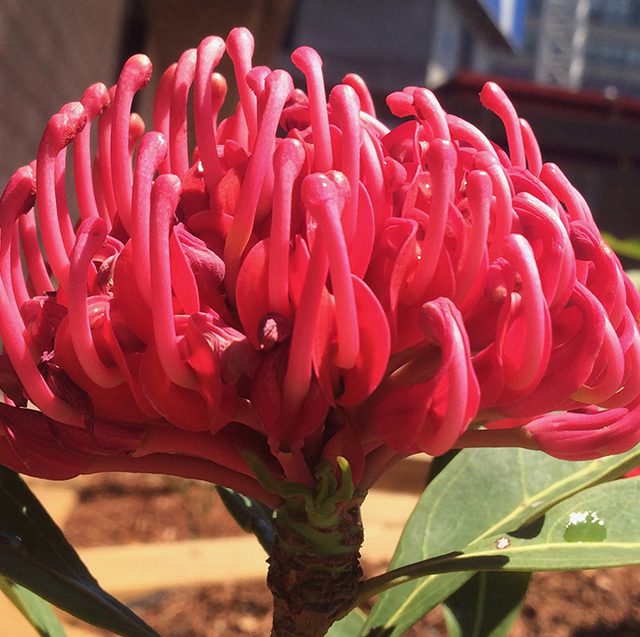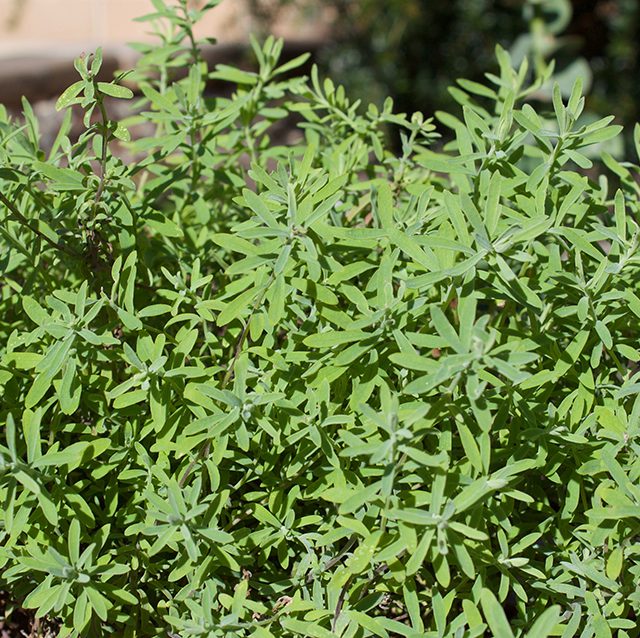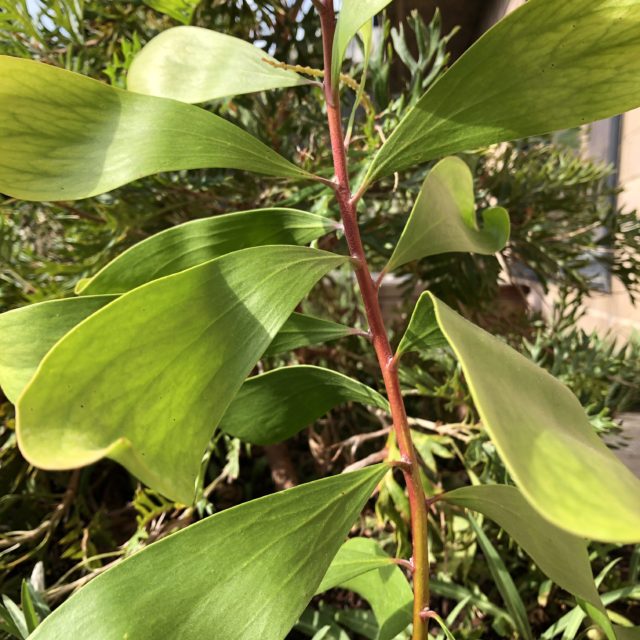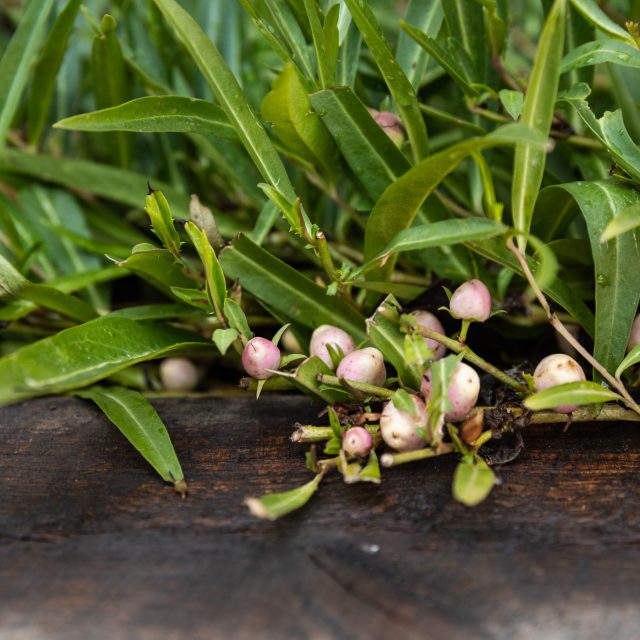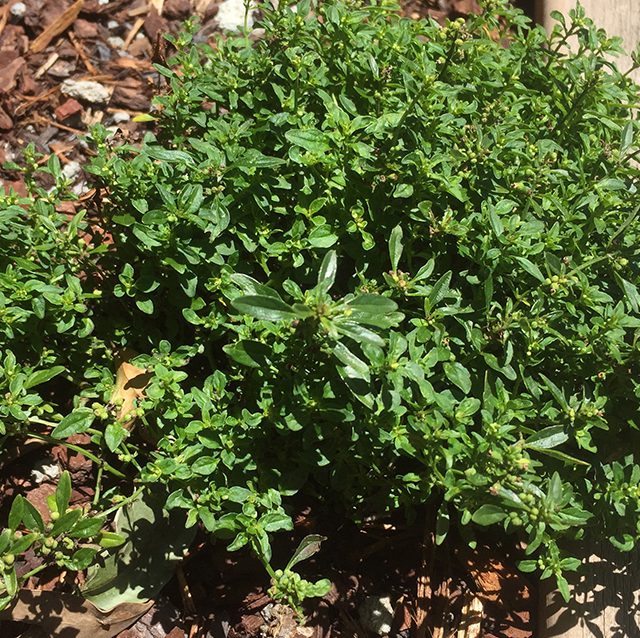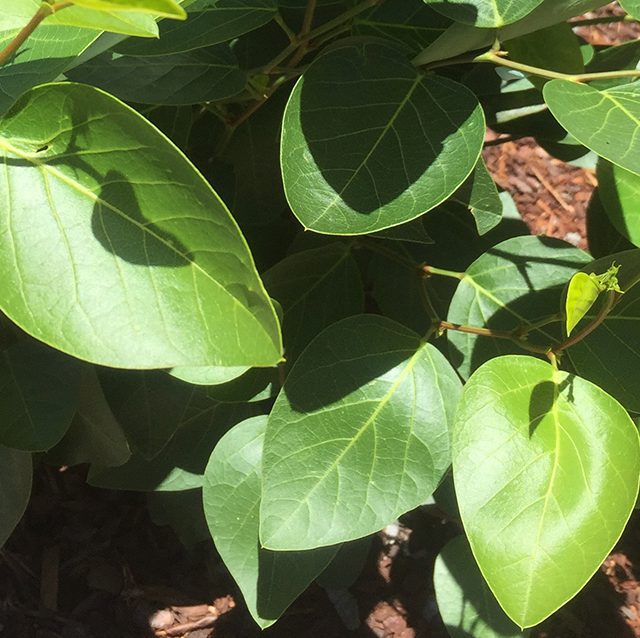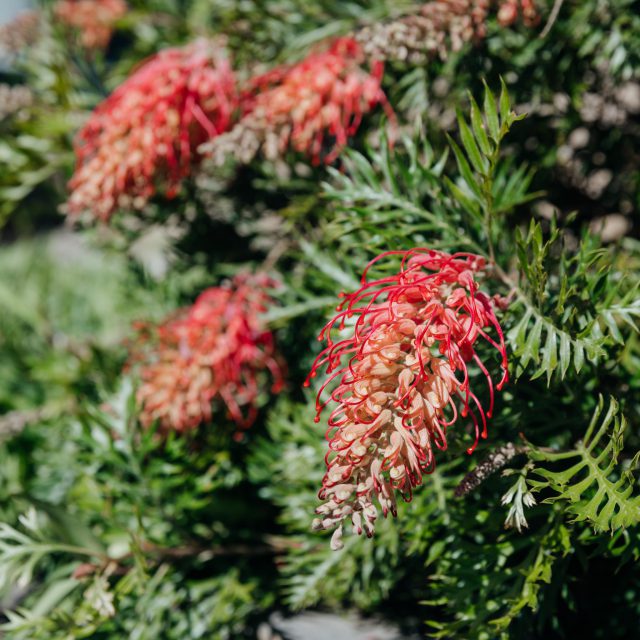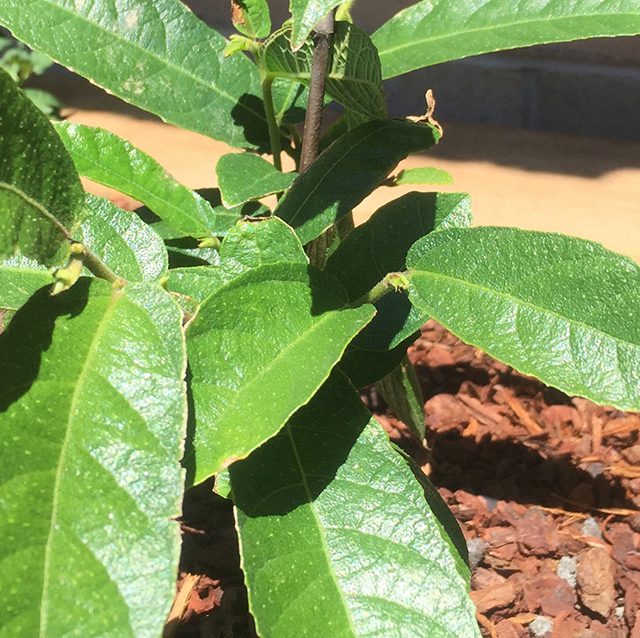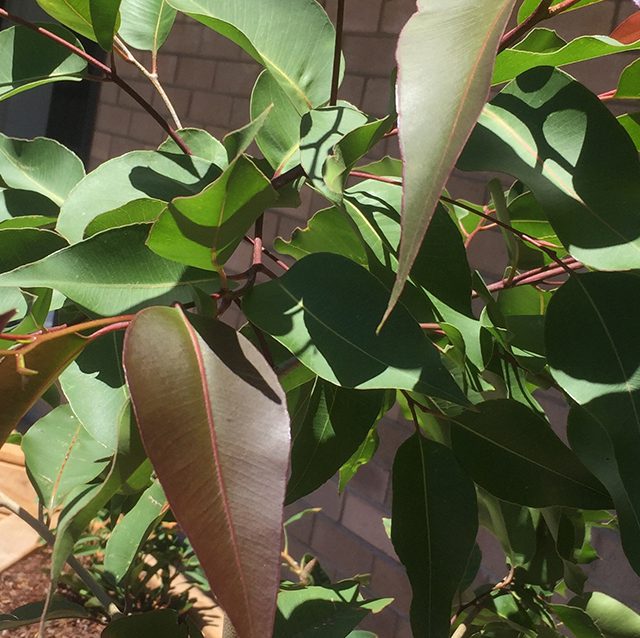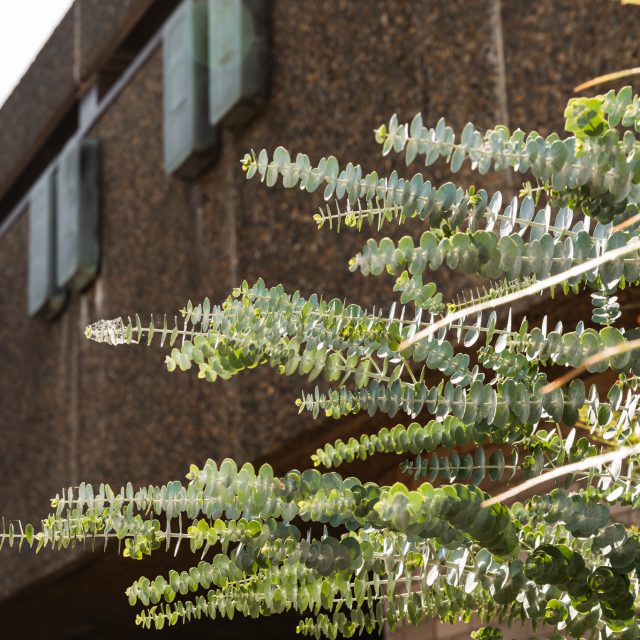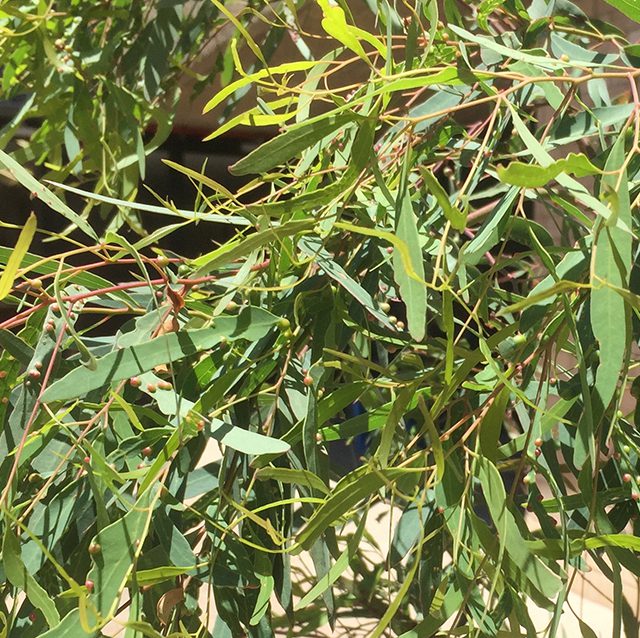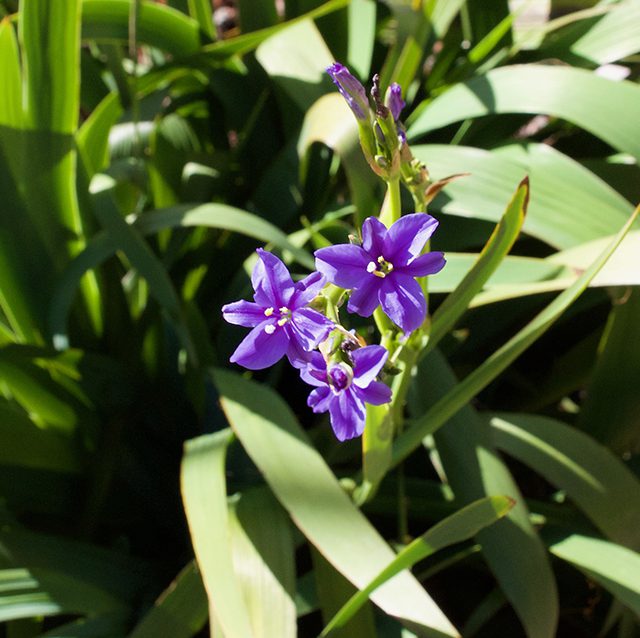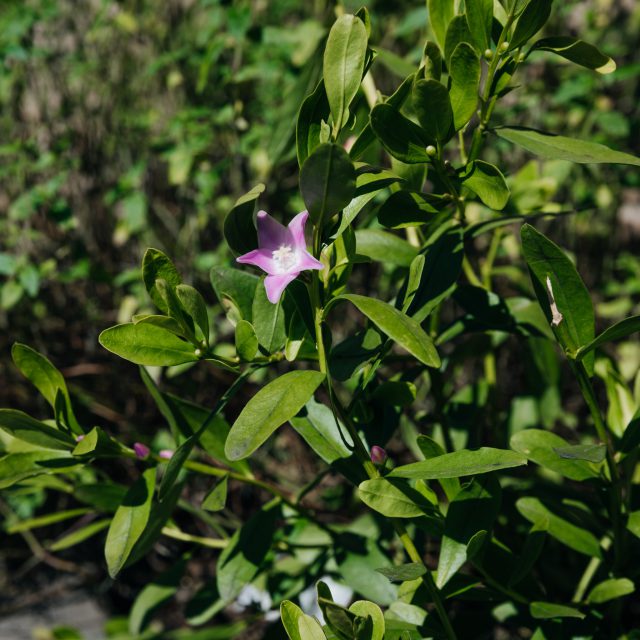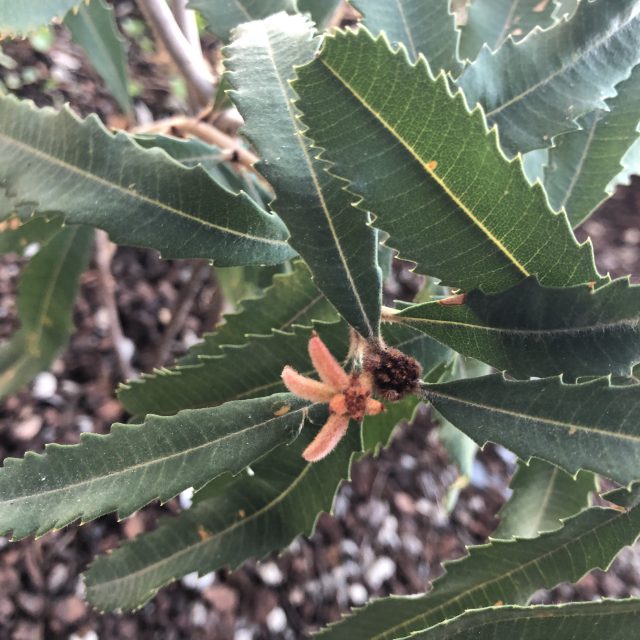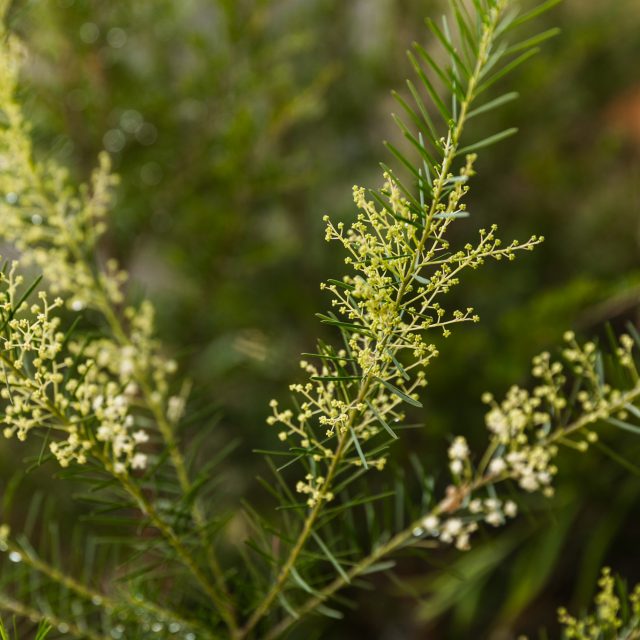Ficus coronata
Common Name: Sandpaper Fig
Transcript of Aunty Fran Bodkin explaining the uses of Ficus Coronata:
Ficus coronata, the leaves were used to remove the hairs from the thigh to enable string to be strung because what we used to do was when we had to tightly roll the string up, rub it down our legs - hold one end of it and rub in down our legs until you got a really tight twist and if you’ve got hairy legs it hurts a lot. Wherever you see a Ficus coronata growing in the bush you knew that’s where the women were making string. Yes, the leaves were used to smooth the weapons and implements and even today if you’re making a boomerang or a - any kind of wooden implement, even a chair leg, if you rub it with the sandpaper fig leaves, you will find you get a much finer finish.
The inner bark could be pounded, then the fibers were separated and spun into string for fishing and animal traps. Now, this is really important because the string would be able to be used without rotting in saltwater, so you could use it in saltwater or freshwater and that’s the important part of the string.
The fruit. It could be eaten when it was soft and pulpy but it had to be rubbed in sand to remove the fine hairs but you can rub it between your hands and remove the fine hairs anyway. But you’ve got to beat all the animals and the birds to the fruit before you can taste the beautiful fruit.
And the milky latex, this is if you cut a little slit into the trunk of the tree and the latex, you’d collect the latex. You apply it to warts and to ringworms and it’s painless so it’s really good too. So there’s other ways of removing warts and that’s very painful.
